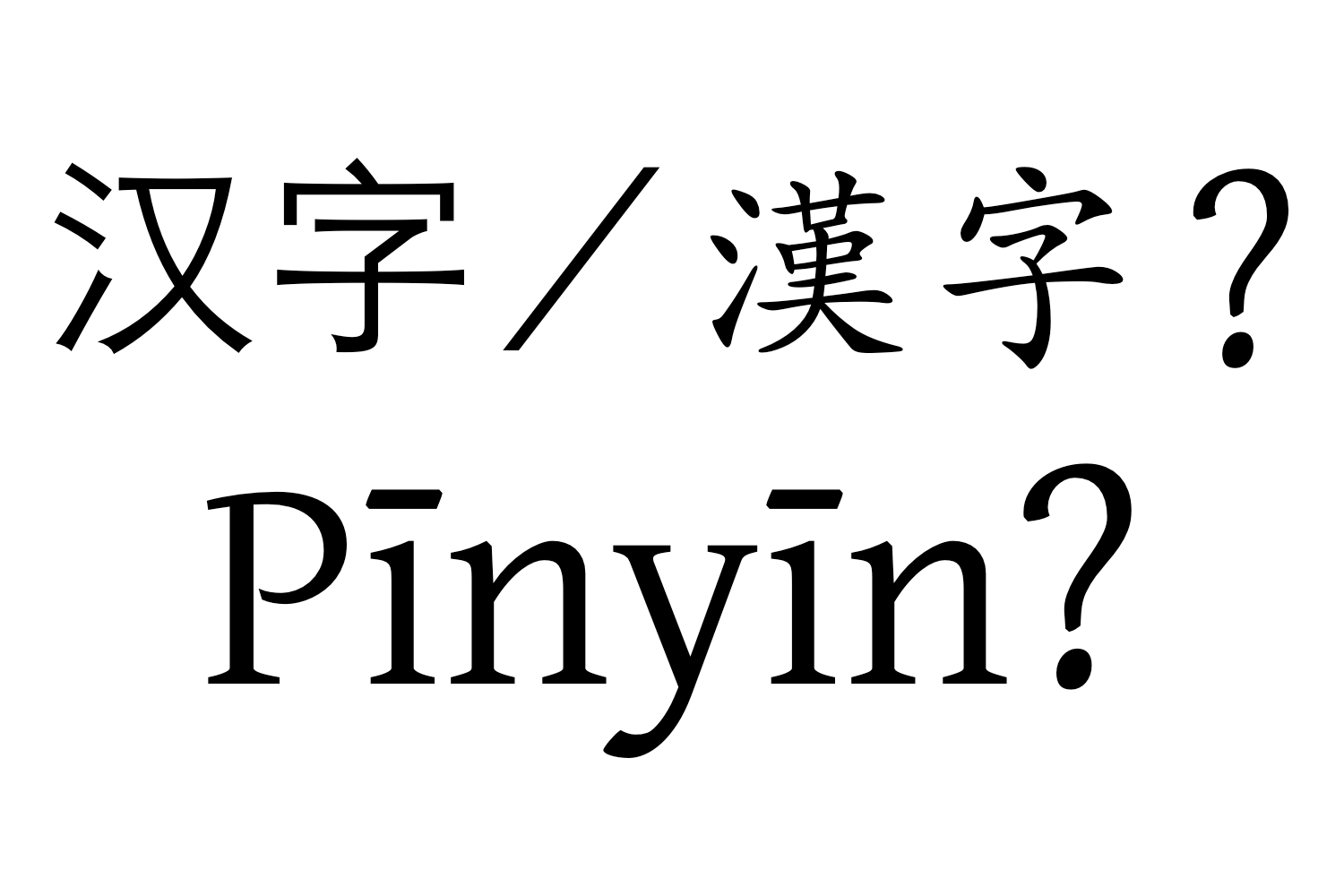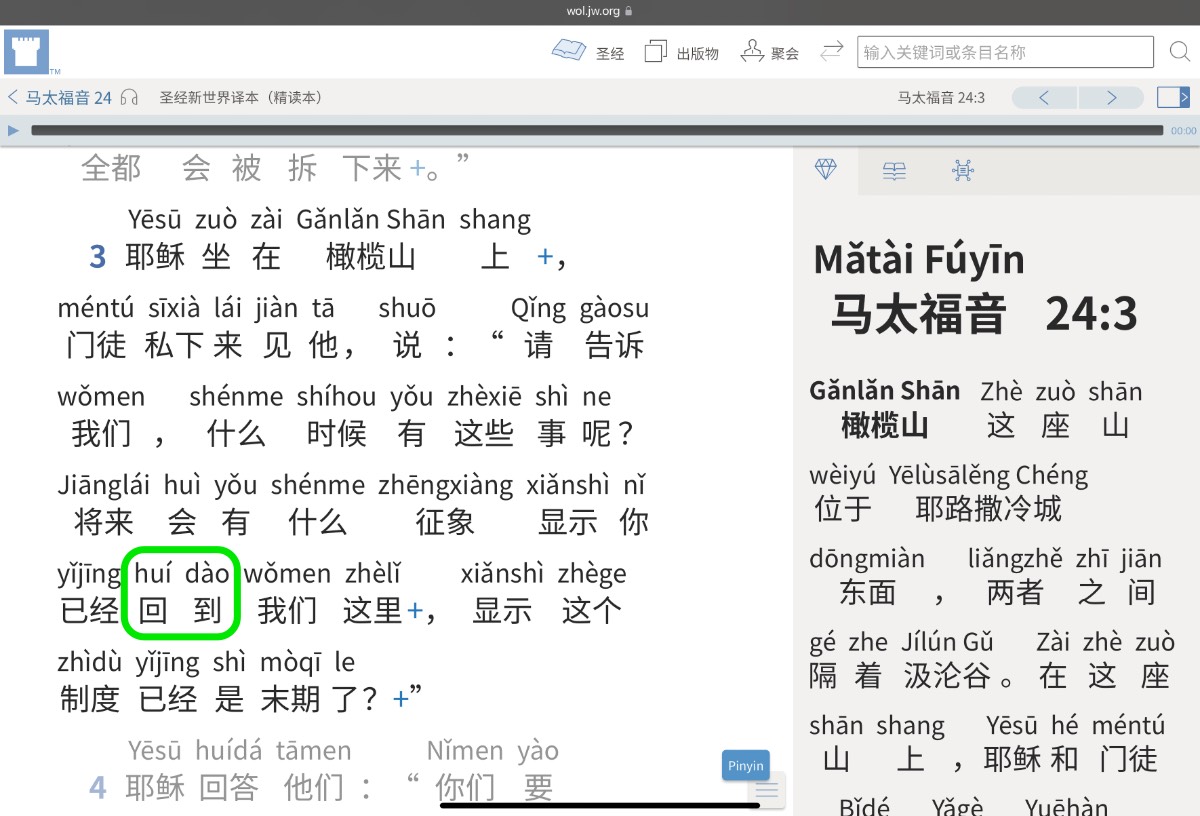Jìniàn Jùhuì ((Jì·niàn Remembering · {Thinking Of} → [Commemorating] 记/纪念 記/紀念) (Jùhuì Meeting 聚会 聚會) → [[the] Memorial]) ← Tap/click to show/hide the “flashcard”
The page on jw.org entitled “Memorial of Jesus’ Death” invites people to this year’s Memorial, which as of this writing is fast approaching.
Appearing in the title of the Mandarin version of that page is this week’s MEotW, “Jìniàn Jùhuì ((Jì·niàn Remembering · {Thinking Of} → [Commemorating] 记/纪念 記/紀念) (Jùhuì Meeting 聚会 聚會) → [[the] Memorial])”, which corresponds to “Memorial”, or “the Memorial”.
Note that in this post, “Jìniàn Jùhuì ((Jì·niàn Remembering · {Thinking Of} → [Commemorating] 记/纪念 記/紀念) (Jùhuì Meeting 聚会 聚會) → [[the] Memorial])” is capitalized, rather than being rendered in all lowercase letters. Why has this been done? The answer involves another question: Is Pīnyīn (Pīn·yīn {Piecing Together} · Sounds → [Pinyin] 拼音) just a pronunciation aid or actually a full writing system?
To Be or Not to Be…a Full Writing System?

The article “Pīnyīn (Pīn·yīn {Piecing Together} · Sounds → [Pinyin] 拼音) Was Plan A” explains that Pīnyīn (Pīn·yīn {Piecing Together} · Sounds → [Pinyin] 拼音) was originally meant by Máo Zédōng ((Máo Hair (surname) 毛) (Zé·dōng Marsh · East 泽东 澤東) (the founder of the People’s Republic of China)) and some of the other early movers and shakers of the People’s Republic of China to eventually replace Chinese characters. (Yes, seriously—it’s April, but we Jehovah’s Witnesses don’t make April Fools’ jokes!) Even though in this case cultural pride, tradition, and inertia have been allowed in the Mandarin-speaking part of the world to leave no room for innovation and progress, the fact remains that Pīnyīn (Pīn·yīn {Piecing Together} · Sounds → [Pinyin] 拼音) was intended by design to work as a full writing system. That it actually does so is shown in the scholarly paper “Two Steps Toward Digraphia in China”, and in the article “Pīnyīn (Pīn·yīn {Piecing Together} · Sounds → [Pinyin] 拼音) Is a Good, Workable Writing System on Its Own”.
R-E-S-P-E-C-T
Since Pīnyīn (Pīn·yīn {Piecing Together} · Sounds → [Pinyin] 拼音) is a full writing system like English is, there is good reason to consider it appropriate to capitalize Pīnyīn (Pīn·yīn {Piecing Together} · Sounds → [Pinyin] 拼音) words similarly to how English words are capitalized. Of course, there are different style guides with different rules regarding how and what to capitalize in English, especially when it comes to titles, but at the very least, any particular piece of writing should generally stick to whatever capitalization style has been chosen for it. (Hopefully it’s a good one.)
Unfortunately, in the part of the world that uses written Mandarin, Pīnyīn (Pīn·yīn {Piecing Together} · Sounds → [Pinyin] 拼音) is generally relegated to being just a pronunciation aid—it is not given the respect and dignity of being recognized as a full writing system, even though, as discussed above, it linguistically qualifies as one. Thus, Pīnyīn (Pīn·yīn {Piecing Together} · Sounds → [Pinyin] 拼音) is generally not capitalized in the world, if it is used at all. In contrast, Pīnyīn (Pīn·yīn {Piecing Together} · Sounds → [Pinyin] 拼音) Plus material gives Pīnyīn (Pīn·yīn {Piecing Together} · Sounds → [Pinyin] 拼音) the respect it has earned—it uses Pīnyīn (Pīn·yīn {Piecing Together} · Sounds → [Pinyin] 拼音) as its default main writing system and carefully follows the capitalization example of the official English version of the Mandarin material it is based on. E.g., since “God’s Kingdom” is rendered in the official English material with capital letters at the beginnings of its words, the Pīnyīn (Pīn·yīn {Piecing Together} · Sounds → [Pinyin] 拼音) Plus material follows suit with “Shàngdì (Shàng·dì Above’s · {Emperor → [God]} → [God] 上帝) de (’s 的) Wángguó (Wáng·guó King’s · Nation → [Kingdom] 王国 王國)”.
So, since “the Memorial” is capitalized in the organization’s official English material, such as the English version of the article “Memorial of Jesus’ Death” on jw.org, “Jìniàn Jùhuì ((Jì·niàn Remembering · {Thinking Of} → [Commemorating] 记/纪念 記/紀念) (Jùhuì Meeting 聚会 聚會) → [[the] Memorial])” is capitalized in this post and in other material containing Pīnyīn (Pīn·yīn {Piecing Together} · Sounds → [Pinyin] 拼音) Plus material.
The Precedent of Punctuation
Is it “beneath” the Chinese world to follow the example of English when it comes to the capitalization of the alphabet it uses? Well, the Chinese world has followed Western writing style examples before, with punctuation. As the MEotW post on “diǎnliàng (diǎn·liàng {dot → [light (v); ignite]} · {to be bright} [→ [illuminate; shine light on]] 点亮 點亮)” pointed out:
Chinese writing in the past didn’t have punctuation, and now it has punctuation largely modeled after European punctuation. (For reference: Chinese punctuation – Wikipedia, Q&A: When were punctuation marks first used? – HistoryExtra, history – When was punctuation introduced into Chinese? – Chinese Language Stack Exchange)
